Coexisting with the Grasslands
Activities to use and maintain these grasslands continue even today, and the superb views, diverse ecosystems, and distinctive cultures are being passed on to the future.
- Grazing begins in mid-April and continues until late October. In some areas, cows graze year-round
- Morning mowing (grass cutting) begins in mid-June and continues until August
- Hay cutting (grass cutting) takes place between September and October, and firebreaks are cut around the same time
- Prescribed burning takes place between February and March

Tap to enlarge
Grazing
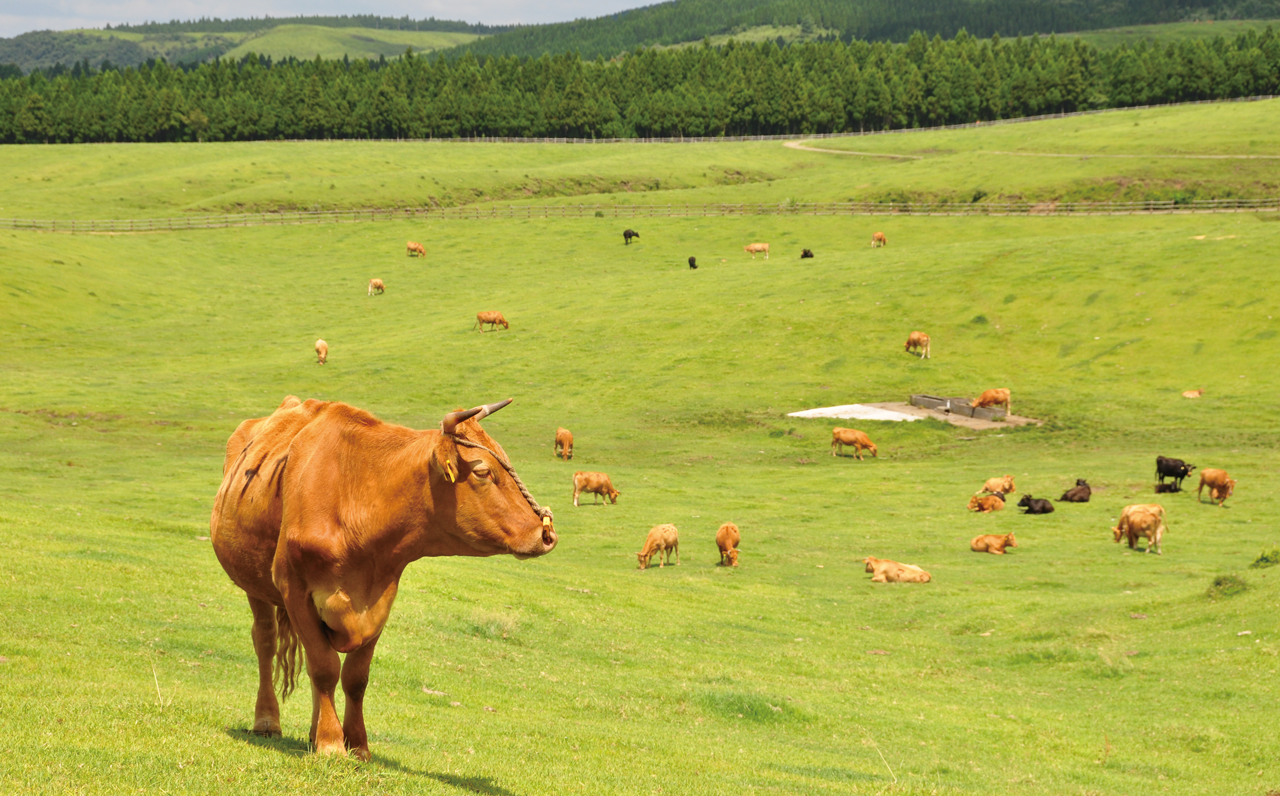
On the grasslands of Aso, grazing begins around May when the grass becomes fresh and green, and continues until around December when the grass withers. Many of those grazing are cows and calves. Those of a reddish-brown color are called Akaushi cows, and are representative of Aso.
In recent years, cows can graze on grassland throughout the year, and can be seen grazing even during the winter.
Looking at Scenes from the Past
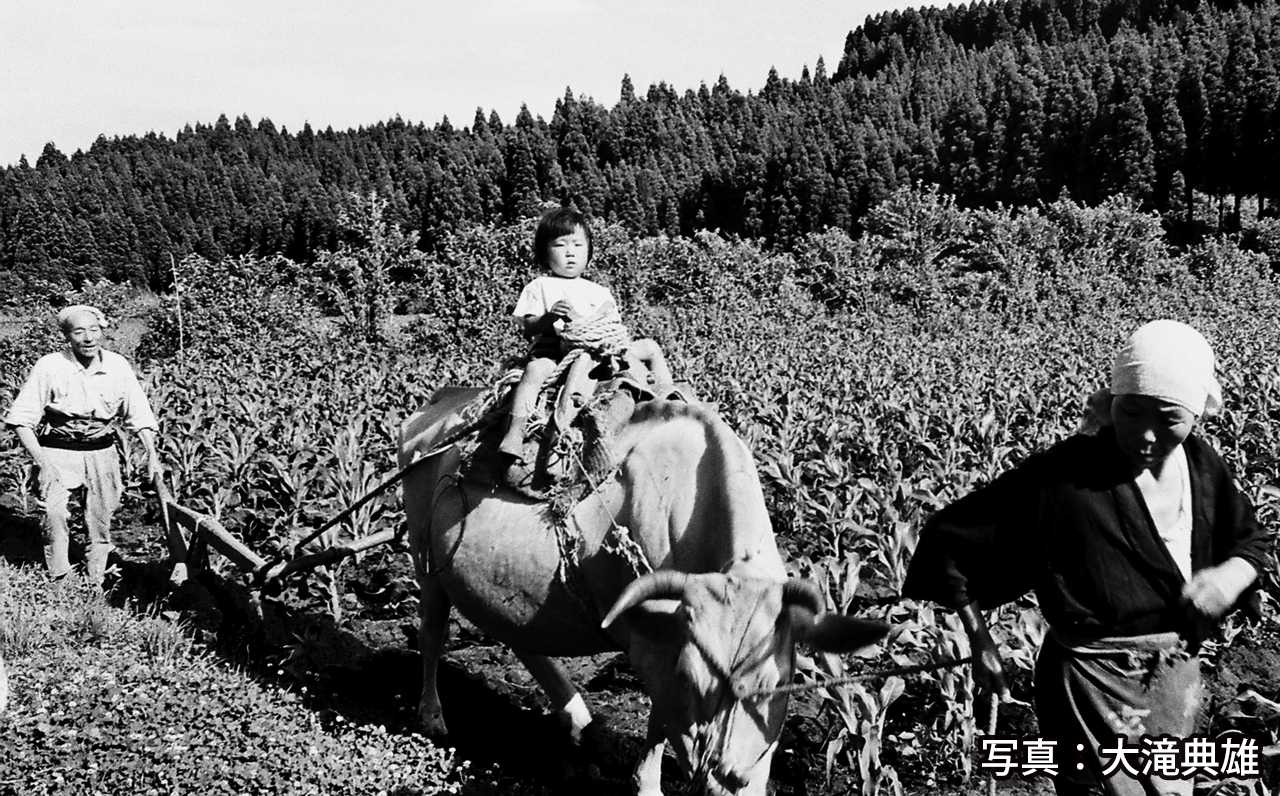
Draft Cattle
Akaushi cows are hard-working, and in the past they played a role in agriculture, tilling fields and carrying loads.
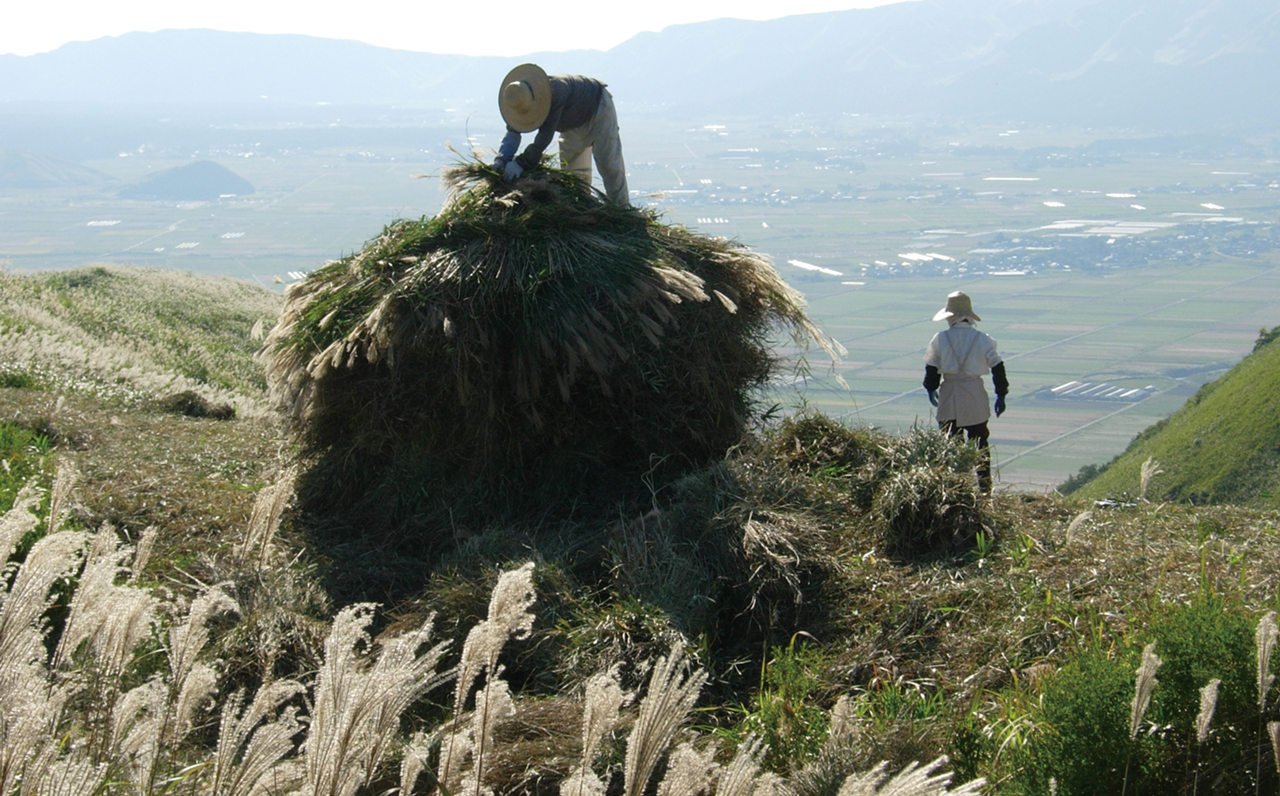
Grass Heaps
Kusakozumi is a traditional method of stacking and storing grass cut on the grasslands. Even today, these heaps are made in order to pass down the technique, and can be seen on the roadside.
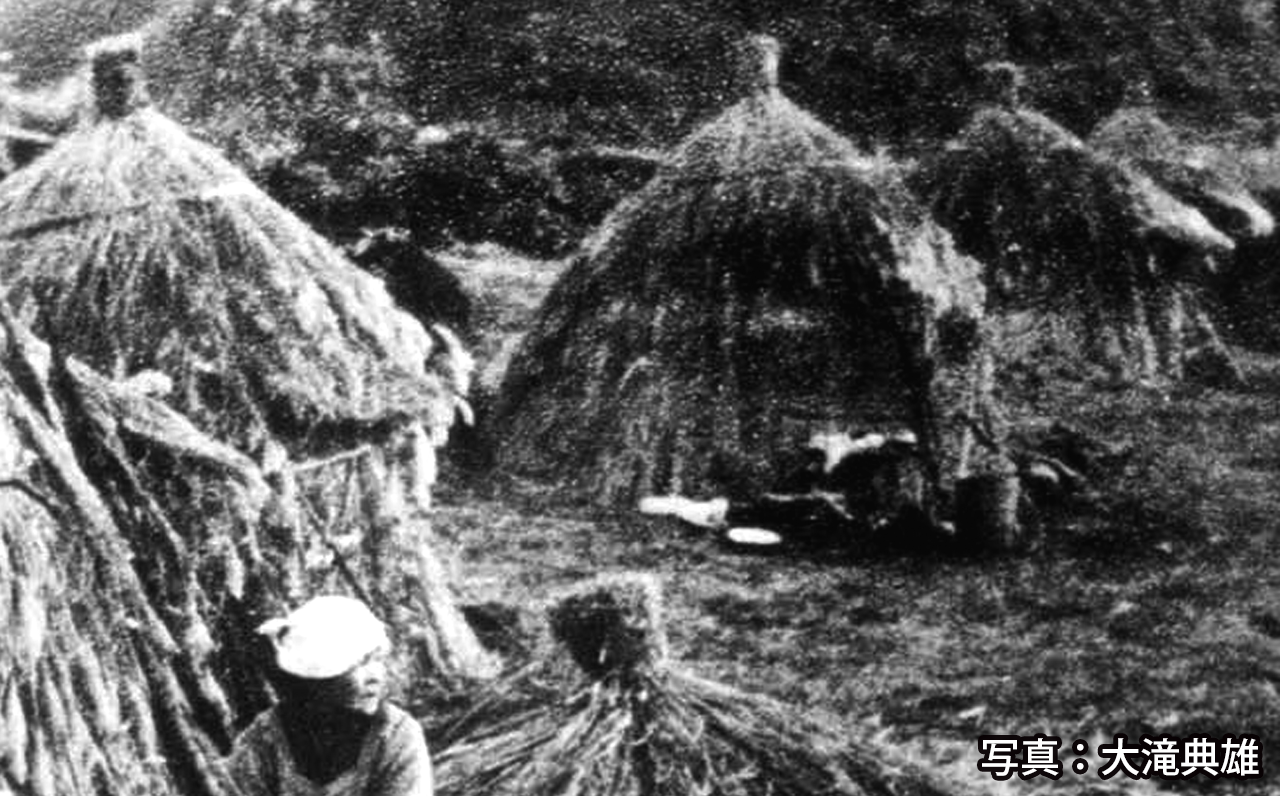
Grass Huts
Grass huts for staying ovenight on the grassland are known as kusadomari. In the past, workers would stay in these huts for days while they mowed the grass.
Mowing (Grass Cutting)
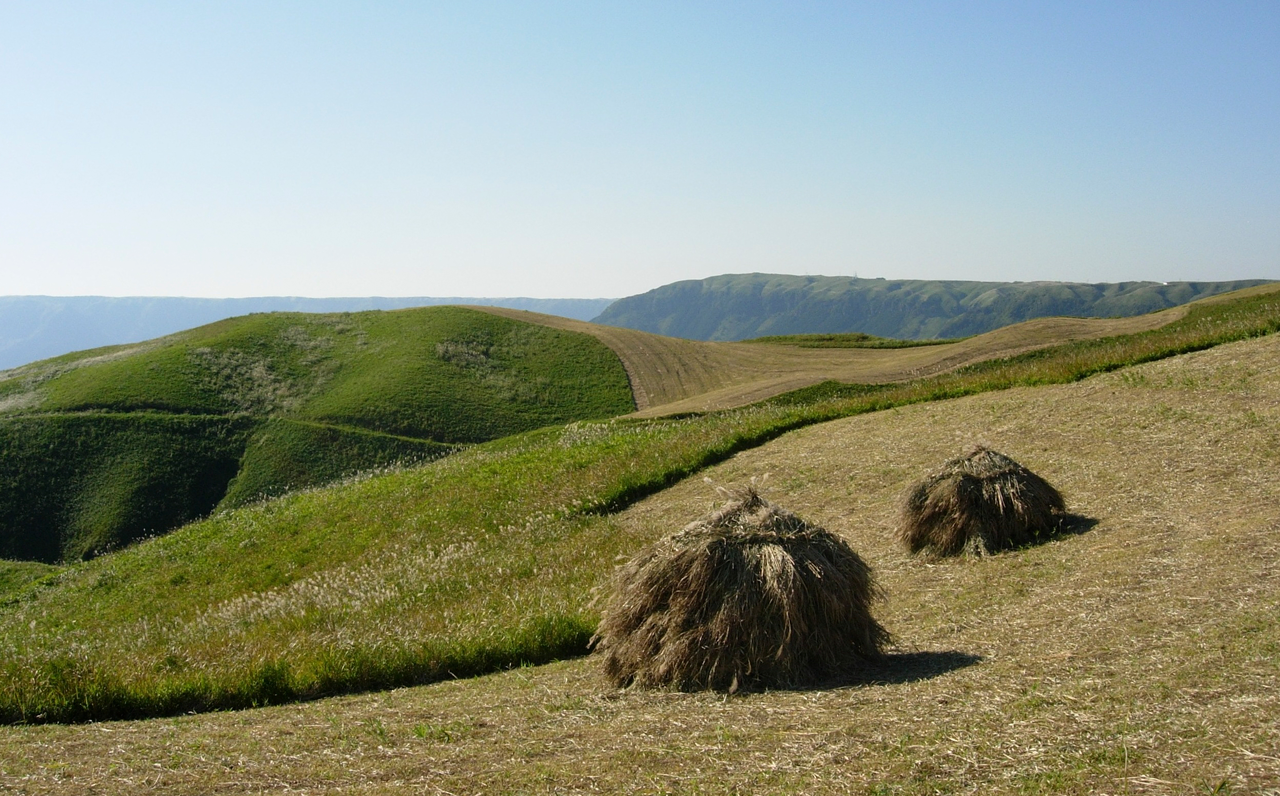
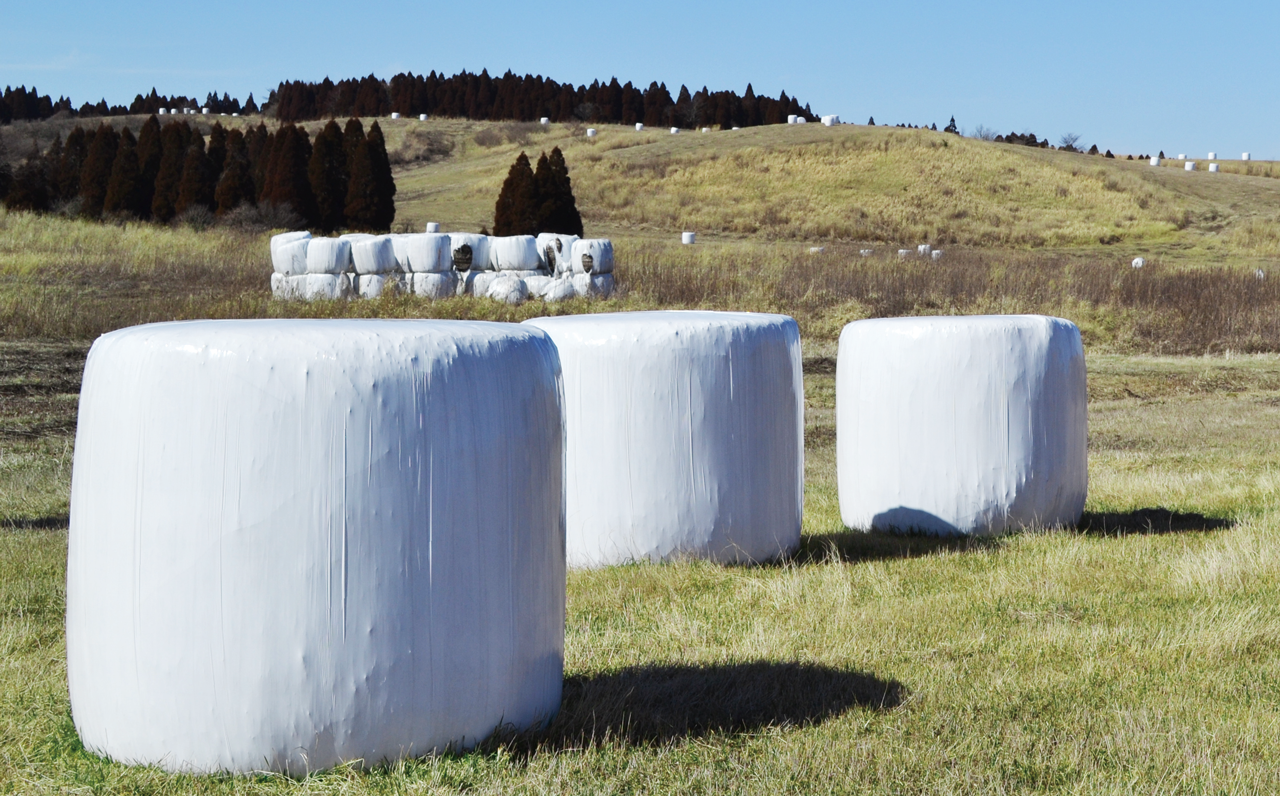
From around September to October, mowing is carried out to produce feed for cows and horses during the winter, when the grass of the grassland withers. Green grass rich in nutrients is cut and dried in the sun for 2–3 days to make hay, then bundled and stored.
The white masses seen on the grassland after cutting are called bales. Smaller ones weigh 250 kg, while larger ones weigh 400 kg.
Obon Flower Picking
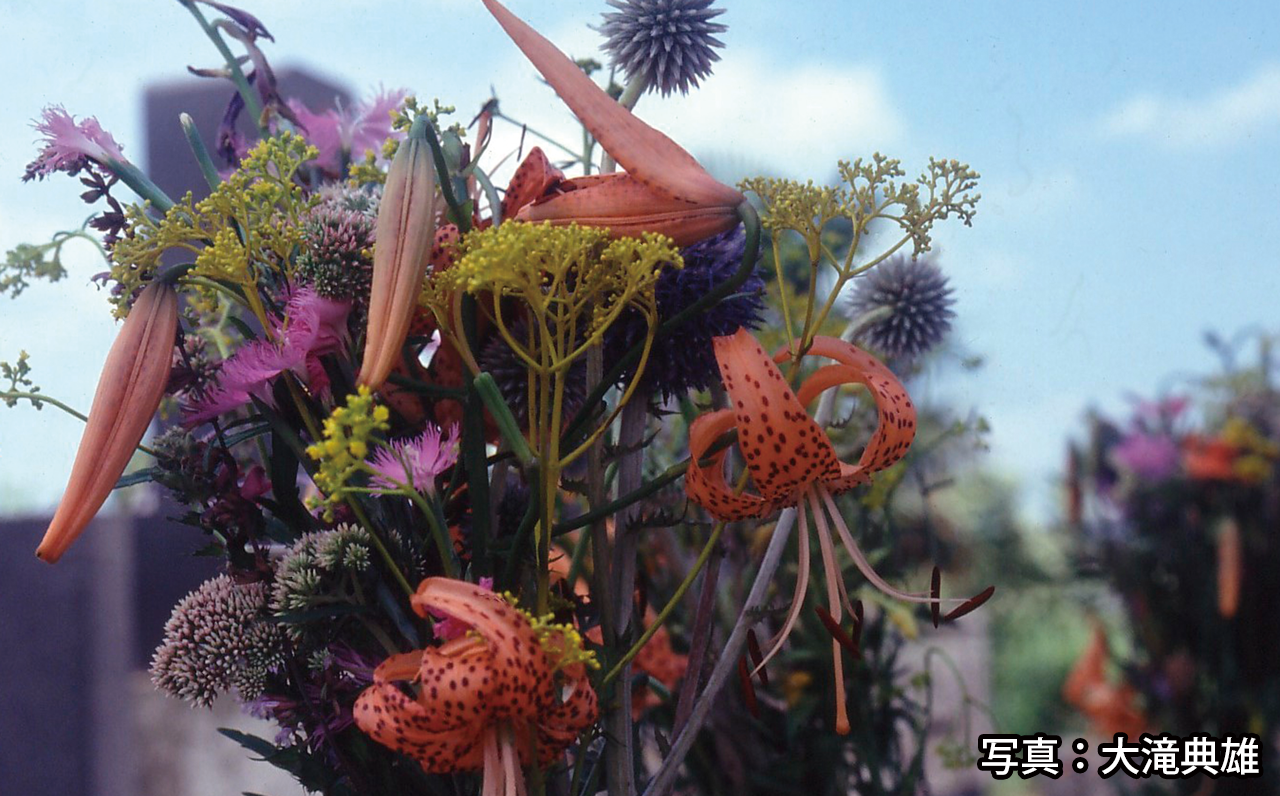
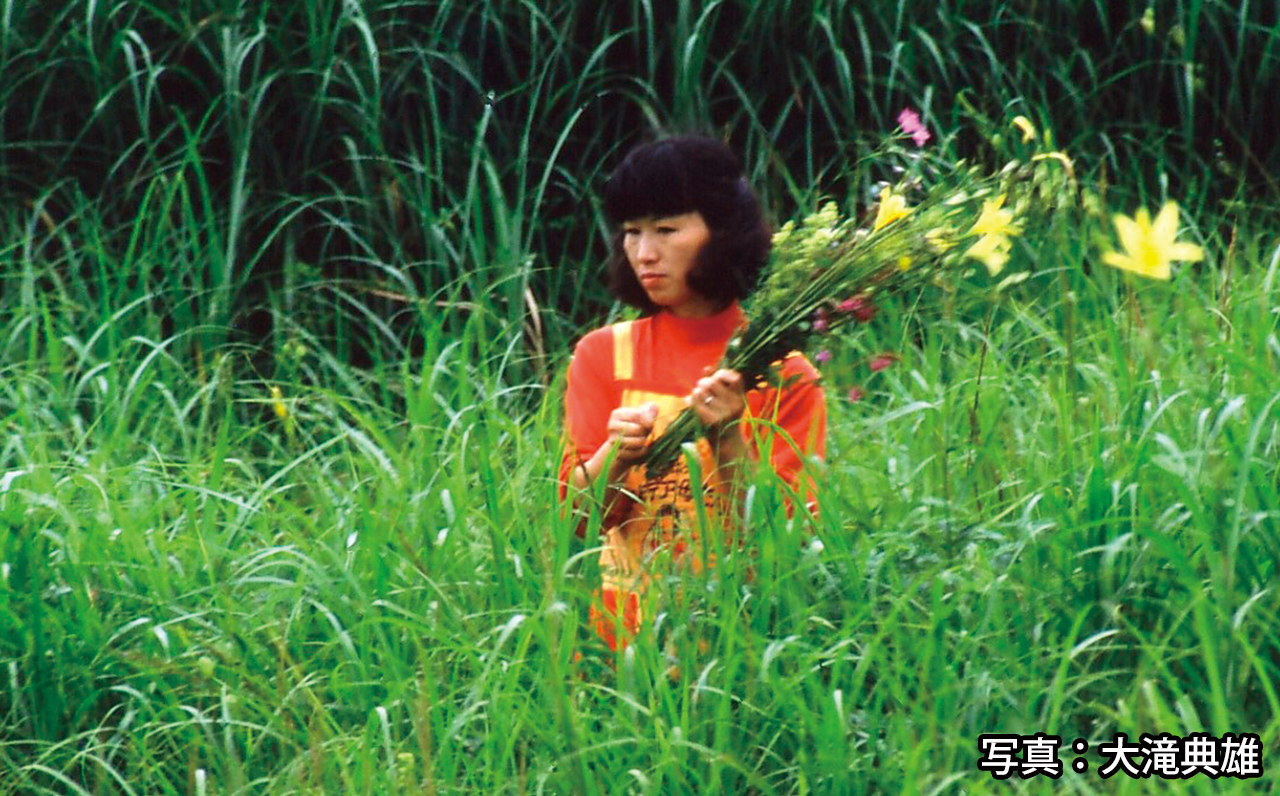
Once upon a time in Aso, locals would pick flowers from the grasslands to lay at their ancestors graves for the Obon festival in August. Now however, measures must be put into place in order to prevent large-scale theft of rare varieties.
Cutting Firebreaks
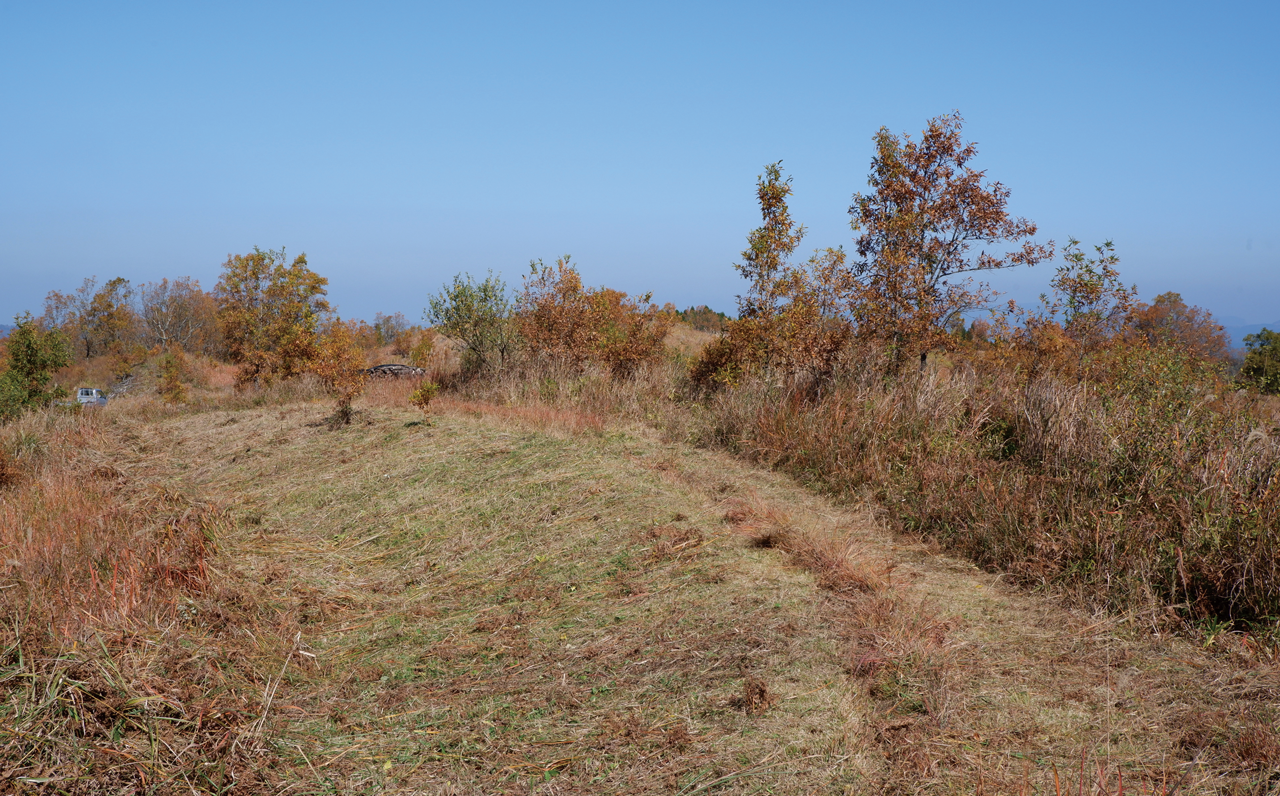
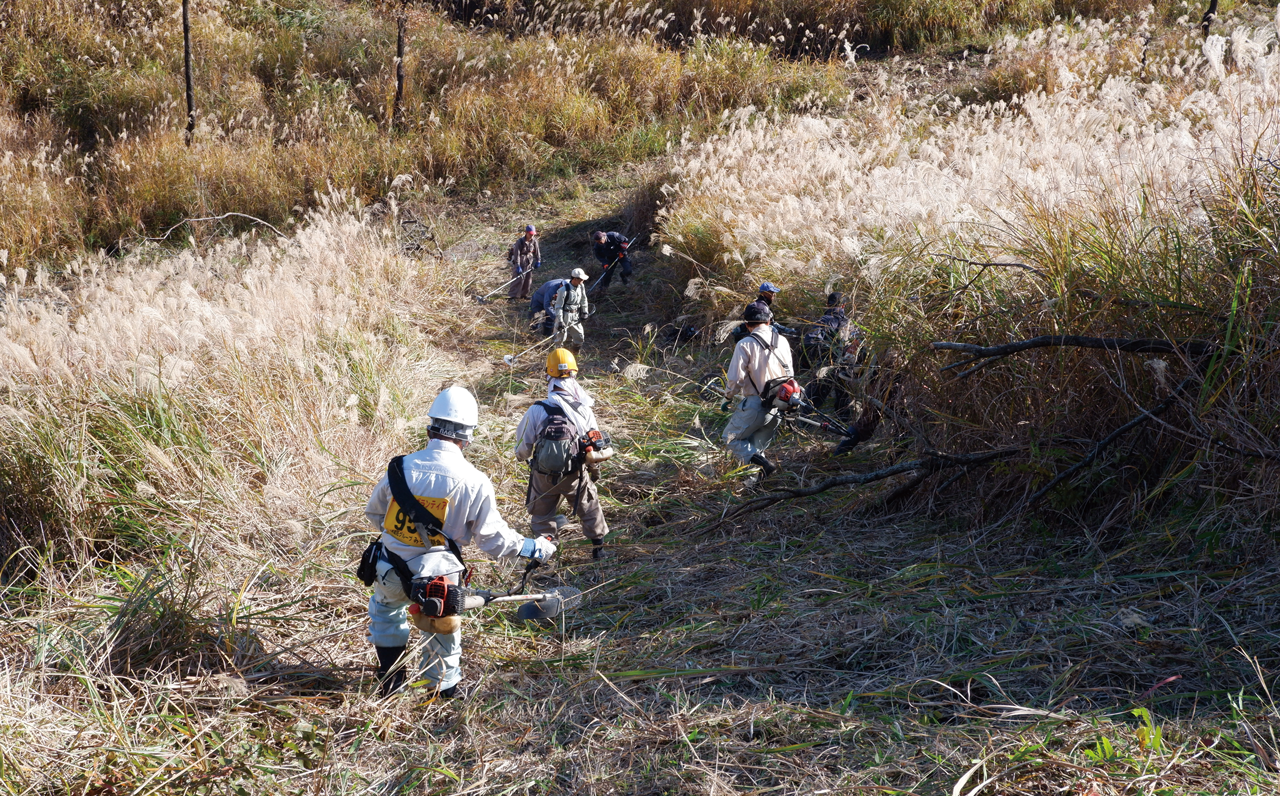
These are the most important tasks before noyaki (prescribed burning). Firebreak belts are created to prevent fire from spreading to nearby mountain forests or buildings. The process of cutting grass over a width of 6–10 m between the grassland and forests is called wachikiri, and the process of burning the cut grass in the belts a few days later is called wachiyaki.
This is hard work carried out on steep slopes.
Noyaki (Prescribed Burning)
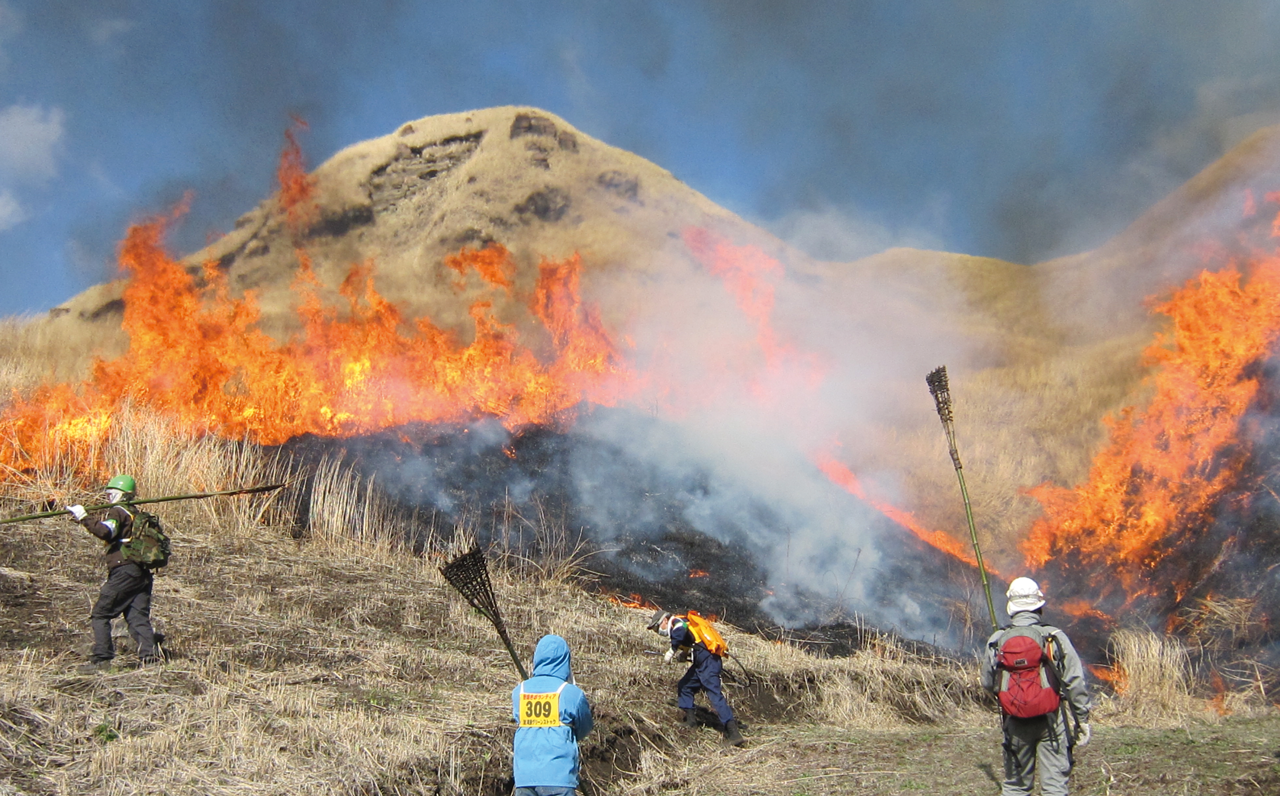
Noyaki, or prescribed burning, begins all over Aso every year in March. This involves burning away the remaining withered grass on the grasslands to assist the sprouting of new grass.
The fires can in some cases reach heights of 30 m. These fires are incredibly dangerous, and require skillful technique, teamwork, and many helping hands. This collaborative work is supervised by experienced individuals and the pasture union president.
Grasslands Following Noyaki
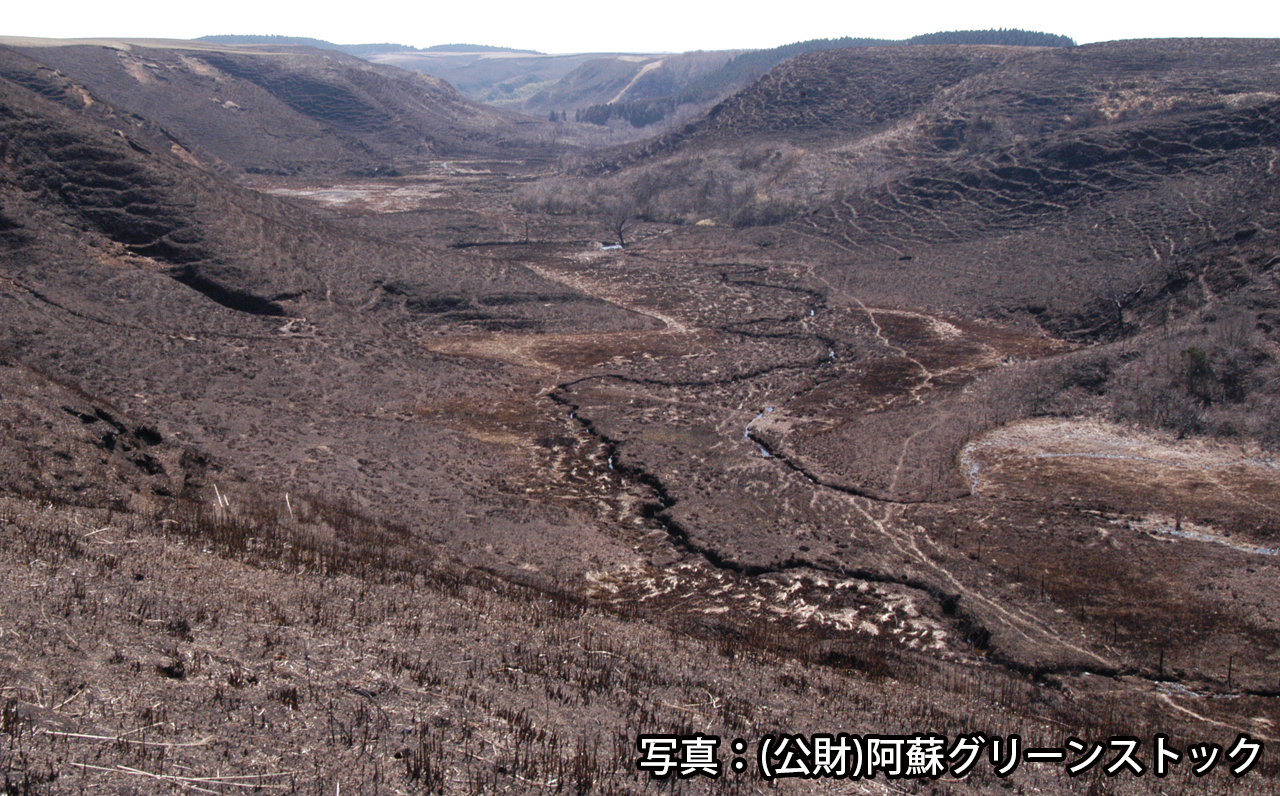
After noyaki, the grassland is pitch black. The ash covering the land serves as a nutrient. The black soil found in Aso's grasslands, called kurobokudo, is rich with fine charcoal particles, the result of prescribed burning.
Under the pitch black ash, the grass of the grassland, whose underground stems are developing, begins to sprout in less than a month. In prescribed burning, the dead grass on the ground surface is burned in an instant, and thus the flower seeds remaining on the surface or underground also sprout with the grass.

